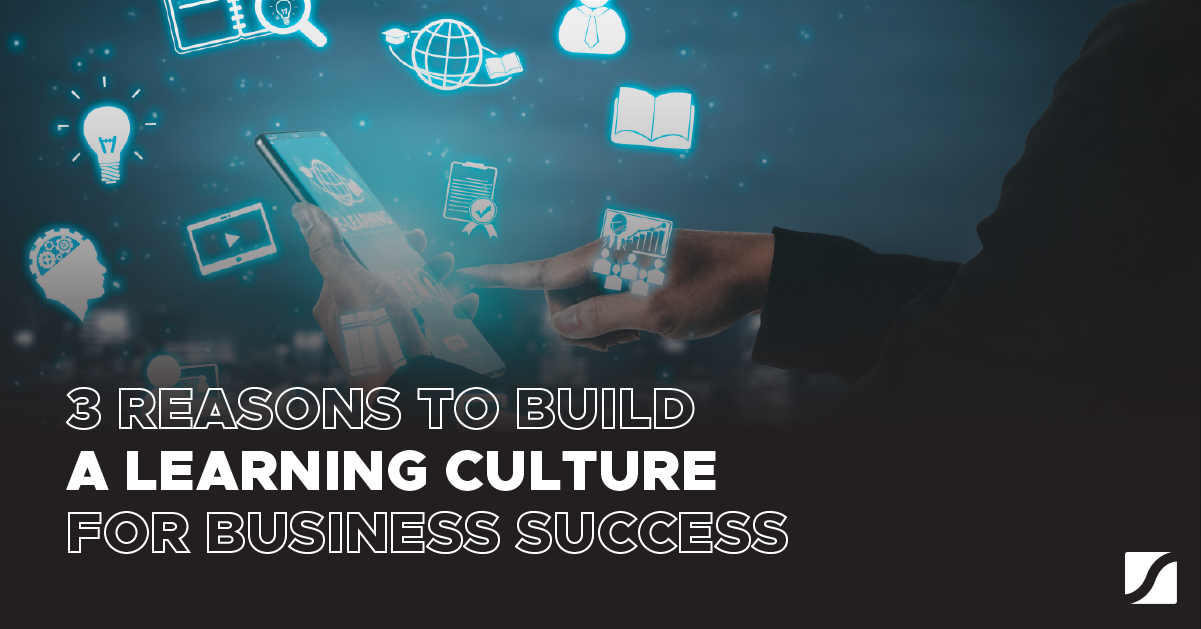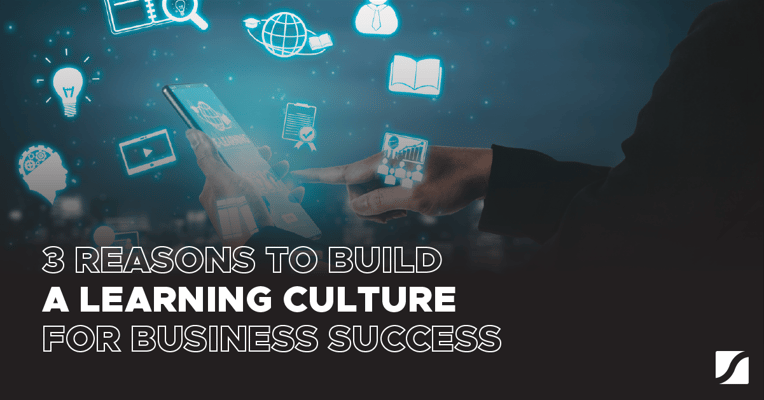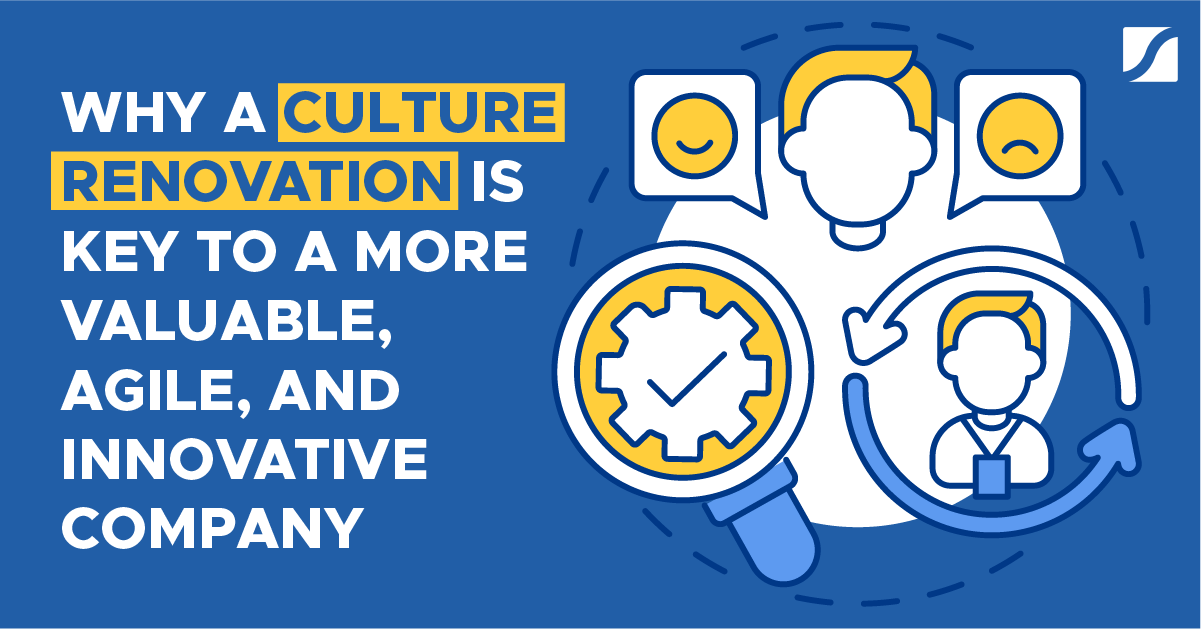3 Reasons To Build A Learning Culture For Business Success

 If you’re looking for evidence of the value of training and development, a fast food restaurant might not be the first place you’d consider.
If you’re looking for evidence of the value of training and development, a fast food restaurant might not be the first place you’d consider.
But Tennessee-based Pal’s might convince you otherwise.
Pal’s is the only restaurant chain ever to receive the coveted Malcolm Baldrige Quality Award. Its food delivery is the fastest in the industry, 4 times quicker than the next-fastest restaurant. It makes a mistake only once out of every 3,600 orders.
What’s the reason for Pal’s success? The restaurant chain is relentless in continuously educating and training its employees.
Pal’s CEO Thom Crosby told Harvard Business Review: “People go out of calibration, just like machines go out of calibration. So, we’re always training, always teaching, and always coaching.”
And, lest you think this commitment is any less important during today’s time of economic upheaval, think again. After all, no less than business magnate Warren Buffett was quick to note training’s value when asked how companies can weather the current storm. He replied to the question by saying:
The best protection against inflation is investing in your own skills.
If business entities ranging from a high-achieving fast food restaurant to a legendary investor are sold on training and development, then it’s a good bet it’s a solid investment for your company too.
Why Is A Learning Culture Important For Your Company?
In a recent webinar I hosted with my colleague Verne Harnish, founder and CEO of Scaling Up, Verne shared why he believes learning and training is your No. 1 performance driver for a thriving business. Here are 3 reasons why:
1. Learning And Development Shows Strong Leadership
It makes sense that entrepreneurs, CEOs, and other executive-level leaders should focus on training as they grapple with rising inflation, talent shortages, and a host of other business concerns. Helping employees adapt as headwinds swirl around them is part of the job.
In fact, it was Greg Brenneman, author of Right Away & All At Once: 5 Steps To Transform Your Business, who said it best: “Great leaders absorb fear and exude hope.”
One of the most effective ways to show that you’re focused on the future is to invest in your employees’ growth. And that means working closely with them to determine what roadblocks they face in doing their work and improving their skills—and then taking action to remove those obstacles.
Coaching and Learning Vs. Managing
An example that supports this notion is the following revelation fromGallup, which has studied employee engagement for more than 50 years: Jim Clifton, Gallup’s chairman, has said his experience shows that employees don’t want to be managed. They want to be coached.
He recommends asking the following of your team members each week: What is your goal, and what is your barrier to achieving it?
If you hold a daily huddle, one of the meeting types that are part of Verne’s Scaling Up methodology, that presents a great opportunity to ask about goals and barriers. These coachable moments show whether your teams’ goals are in alignment with that of your company and what ways you can support their work. Those answers can inform your learning and development efforts.
.png?width=716&name=5%20thoughtful%20quotes%20to%20move%20from%20a%20_know-it-all%20culture_%20to%20a%20_learn-it-all%20culture-01%20(3).png)
2. Growth Mindset Cultures Attract Employees
As large companies lay off employees in this uncertain business climate, small- and mid-market organizations can take advantage.
Indeed, it is, as Margaret Heffernan, author of Uncharted: How to Navigate The Future, has said, the time to “be ambitious.”
Those talented, A-Player employees who are victims of larger companies’ downsizing often are seeking smaller companies as their next stop, hoping for an opportunity to make a greater impact. Here’s where your business can set itself apart.
Make a name for your organization among prospective employees by showing your commitment to training and certification. In a world that doesn’t require continuing education of business leaders, become the rare organization that displays that type of commitment to talent and quality.
After all, commercial airplane flights are among the safest places you can be, and pilots must complete 60 hours of continuing education to renew their licenses.
Pal’s: A Profile In Leadership, Teaching, And Retention
To continue our look at Pal’s, think about what it can teach us about the value of consistently fine-tuning leadership skills—and the impact that effort can have on making your business attractive to employees.
Pal’s Commitment To Continuous Improvement
For example, consider these facts about Pal’s:
- New employees get 120 hours of training before they’re even allowed to work on their own.
- Employees must receive certification and regular re-certification on each of the specific jobs they do.
- Each shift, 2 to 4 randomly selected employees must pass re-certification tests. If they fail, they receive additional training until they can pass the test.
- All of the company’s high-level employees have a list of 21 business leadership books to read. Every other week, 5 selected managers meet with CEO Thom Crosby to discuss 1 of the books.
- Each day, Thom identifies 1 subject that Pal’s leaders must teach to at least 1 other person at the company. In fact, the expectation is that they will spend at least 10% of their time teaching.
Pal’s Learning Culture-Driven Results
As a result, Pal’s displays not only outstanding quality and service but also noteworthy employee satisfaction. In the 5 decades since Pal’s began:
- It has lost only 8 of its restaurant managers voluntarily.
- It has a 1.4% turnover rate among assistant managers.
- Its employees leave at 1/3 of the rate that’s the industry average.
And these achievements in employee satisfaction are occurring in an industry that often faces crushing realities in finding and retaining staff.
.png?width=522&name=Quotes_verneharnish-02%20(1).png)
3. ‘Learn-It-All’ Attitudes Foster Business Growth
Like Thom Crosby at Pal’s, many business titans embrace an emphasis on learning and development. For instance, Satya Nadella, CEO of Microsoft, has credited his company’s re-emergence to his commitment to building knowledge.
He describes it as having a “learn-it-all” culture instead of a “know-it-all” culture. He developed the concept by building on the understanding that children who are continually learning achieve greater success as adults.
Learning And Development Fuels Success
In fact, a thirst for knowledge has underpinned many business success stories, including those of:
- Bill Gates, Satya Nadella’s predecessor at Microsoft, took “think weeks” devoted only to reading and reflecting
- Eric Schmidt, Google’s former CEO and chairman, has said his secret to success was that each weekend, he turned off his phone and read a book
- Mark Cuban, wrote in his book How To Win At The Sport Of Business that each day he spends 3 hours reading, searching for 1 big idea
- Warren Buffett reads 500 pages a day, according to business partner Charlie Munger
But what if you don’t feel comfortable devoting hours a day to reading? There’s where training programs for yourself and your team come in.
Verne shared the story of his former student Henry McGovern.
Henry scaled his European company AmRest to 49,000 employees and countless honors—including the 2019 Gold Stevie Award in its category through the International Business Awards. When he retired from the organization, he told his team that he’d been reflecting on what led them to success.
Henry landed on one answer: “We’re more a training company than a restaurant company.”
Training Is A Core Function Of Successful Companies
Other examples of the value of learning and development programs are organizations that devote entire arms of their organizations to these activities. Giants like Apple and less-prominent organizations like The City Bin Co. have training-focused units.
- Apple University represents Steve Jobs’s quest to continue his vision for the company after his death in 2011. A former Yale University dean led the training program for nearly a decade.
- Garbage University embodies the commitment of Irish waste collection company The City Bin Co. to help its employees achieve their lifelong education dreams. The company provides training to ensure their employees can advance their careers with technical and interpersonal skills.
The City Bin Co.’s focus on improving employees’ skill sets and performance led it to grow from 60 employees in Galway, Ireland, to 1,160 in both Ireland and throughout the Middle East. The company has earned 2 selections as Ireland’s representative in its category for the European Business Awards.
Scale Up Your Business With The No.1 Performance Driver
In conclusion, building a “learn-it-all” culture can help you:
- Show strong leadership
- Attract top talent
- Grow your business
A convenient and effective way to offer this valuable learning and development is to join Growth Institute’s MBD All Access. The program offers access to materials from some of business’s top thought leaders, addressing the key challenges you and your team face. You can take advantage of resources like:
- Master Business Courses
- Micro-training sessions
- Learning suites by topic
- Author-led training
- Weekly videos
- Question-and-answer sessions
If you’d like to learn more about MBD All Access and the value of learning and development for your company, I encourage you to watch the replay of the recent webinar featuring Verne and me. In “The #1 Driver for a Thriving Business,” we delve into the stories I’ve shared here and explore other examples of the value of continuous learning.



